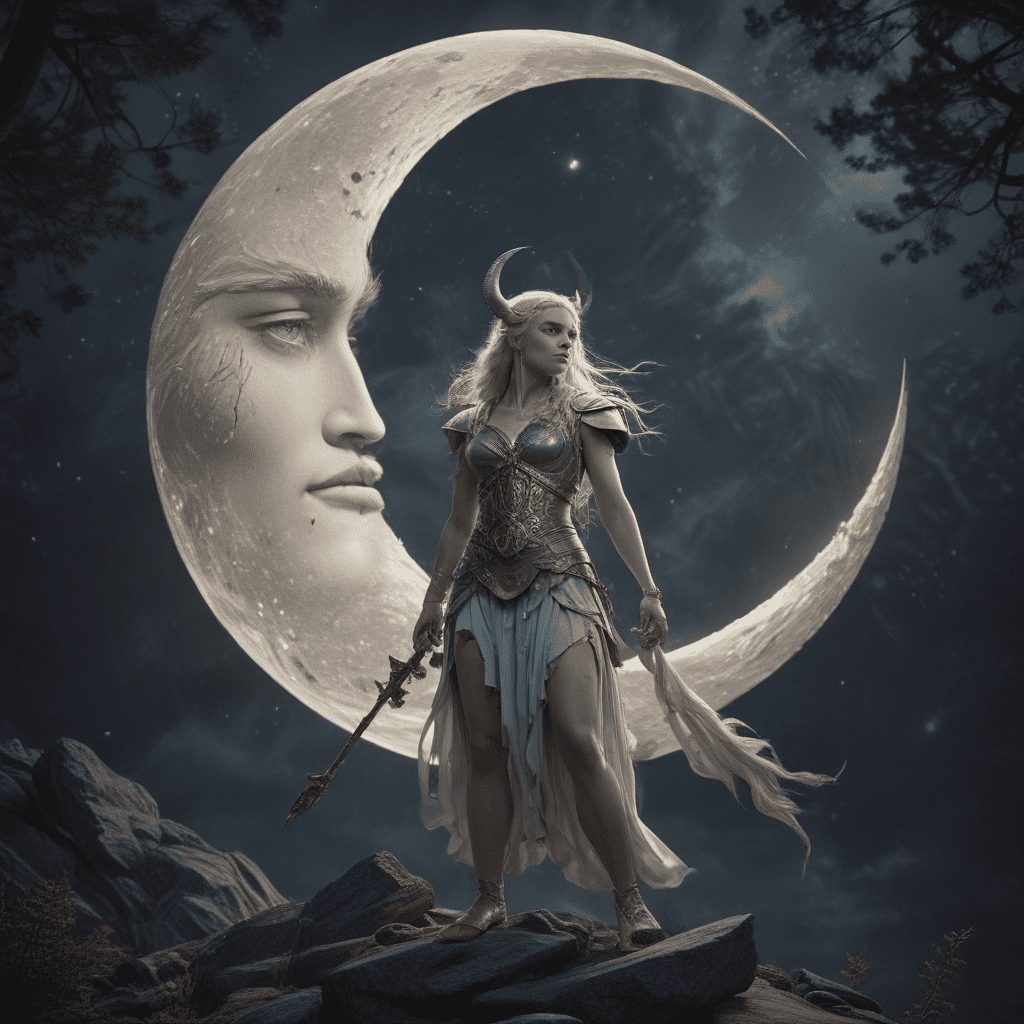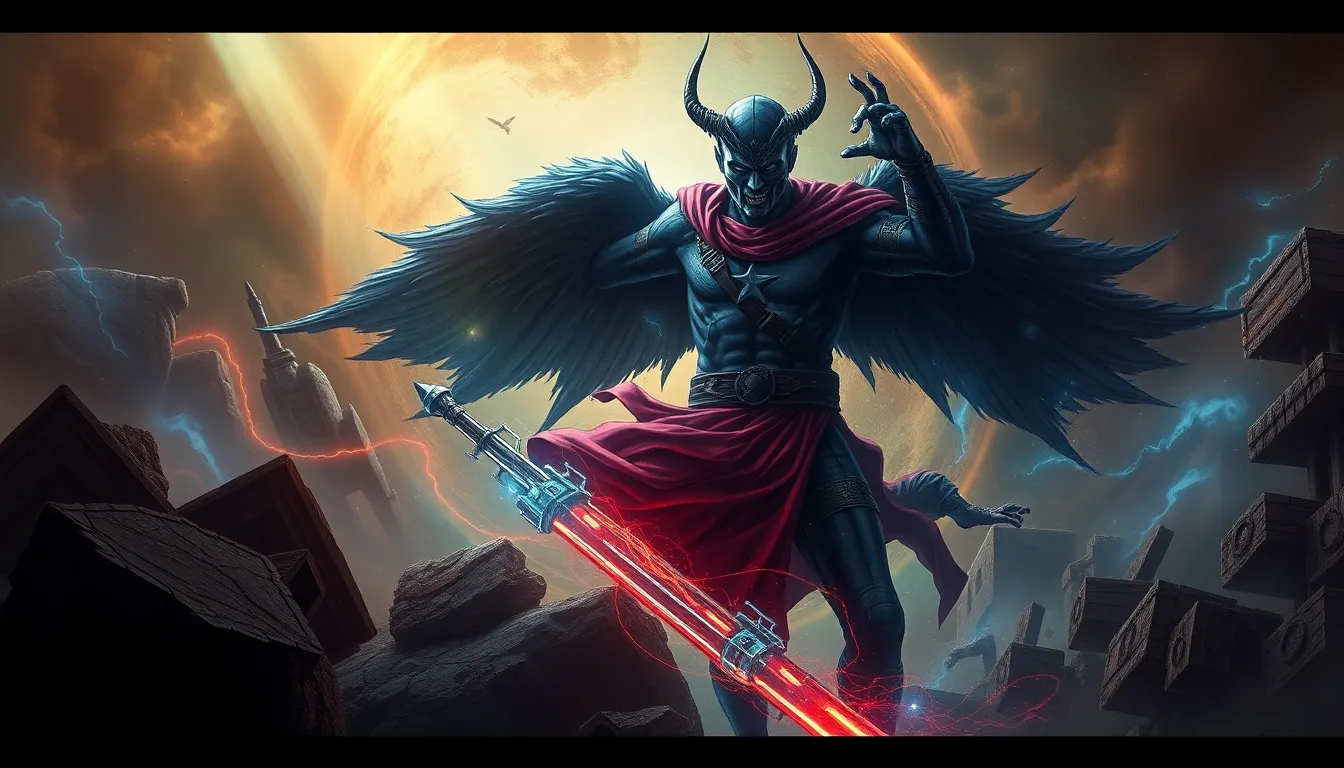The Magic of the New Moon in Finnish Mythology
The enigmatic glow of the celestial sphere has enchanted humankind for eons, inspiring myths and beliefs that weave a tapestry of cultural traditions. In Finnish mythology, the new moon holds a profound significance, embodying the transformative power of nature and the enigmatic presence of lunar deities.
I. Introduction
The new moon, a celestial marvel that marks the beginning of a new lunar cycle, has captivated the imagination of Finnish people for centuries. In Finnish folklore, the new moon is believed to possess a unique set of powers and influences that shape the natural world and human affairs.
II. The Significance of New Moons
In Finnish mythology, the new moon is associated with the concept of renewal and beginnings. It is often perceived as a time of heightened spiritual energy, when the veil between the physical and spiritual realms grows thin. The new moon is also believed to bring about changes and transformations, both in the external world and within the individual.
III. The Goddesses of the Moon
The new moon is closely associated with the Finnish goddess Kuutar, the celestial maiden who personifies the moon. Kuutar is described as a beautiful and mysterious figure who embodies the transformative power of the moon. Another lunar goddess, Kuu, is also mentioned in Finnish mythology, representing the physical aspect of the moon and its influence on earthly affairs.
IV. Moon-Related Beliefs and Superstitions
Finnish folklore abounds with beliefs and superstitions surrounding the new moon. It is believed that the new moon possesses healing properties, and that herbs and plants gathered under its light have enhanced medicinal qualities. Divination, such as casting spells and reading runes, is also said to be more effective during the new moon.
V. Moon Symbolism in Finnish Folklore
The new moon serves as a potent symbol in Finnish folklore, representing both transformation and rebirth. It is associated with the cycle of life, death, and renewal, mirroring the waxing and waning of the moon itself. The new moon symbolizes the potential for new beginnings, a time of shedding old ways and embracing fresh possibilities.
A. Transformation
The new moon is often seen as a catalyst for personal transformation. It is believed that during this time, individuals can undergo significant changes in their lives, breaking free from old patterns and embracing new experiences. The new moon's transformative energy is said to facilitate inner growth and self-discovery.
B. Rebirth
The new moon also symbolizes rebirth and rejuvenation. It marks the end of one lunar cycle and the beginning of another, representing the opportunity to start anew. The new moon's energy is believed to support the release of negative emotions and the cultivation of positive ones, fostering a sense of renewal and vitality.
VI. Moon Rituals and Celebrations
The new moon holds a special place in Finnish cultural traditions, inspiring various rituals and celebrations. Traditional Finnish moon ceremonies often involve gathering under the new moon's glow to sing, dance, and share stories. These rituals are believed to honor the moon's power and to harness its transformative energy for personal growth and well-being.
VII. Moon Imagery in Finnish Art
The allure of the new moon has left an enduring mark on Finnish art. From ancient rock carvings to contemporary paintings, the moon's celestial beauty and symbolic significance have been depicted in countless works of art. Finnish artists have captured the moon's ethereal glow, its transformative power, and its connection to the human experience.
VIII. Modern Interpretations of Moon Magic
In modern times, the magic of the new moon continues to resonate with people around the world, including those who practice modern witchcraft and paganism. The new moon is seen as an auspicious time for setting intentions, casting spells, and performing rituals. Many believe that the moon's energy can amplify the power of their actions and manifestations.
IX. Conclusion
In Finnish mythology, the new moon embodies the transformative power of nature and the mystical presence of lunar deities. It is a time of heightened spiritual energy, associated with renewal, beginnings, and personal growth. The new moon's magic has been woven into Finnish folklore, art, and cultural traditions for centuries, and its allure continues to inspire and enchant people to this day.
X. FAQ
Q: What is the significance of the new moon in Finnish mythology?
A: The new moon is associated with renewal, beginnings, and personal transformation. It is believed to possess healing properties and is often seen as a time of heightened spiritual energy.
Q: Who are the goddesses of the moon in Finnish mythology?
A: Kuutar and Kuu are the two lunar goddesses in Finnish mythology. Kuutar represents the moon's transformative power, while Kuu embodies its physical aspect and influence on earthly affairs.
Q: What are some beliefs and superstitions surrounding the new moon in Finnish folklore?
A: Finnish folklore holds that the new moon possesses healing properties and that herbs and plants gathered under its light have enhanced medicinal qualities. Divination, such as casting spells and reading runes, is also said to be more effective during the new moon.
Q: How is the new moon celebrated in Finnish cultural traditions?
A: Traditional Finnish moon ceremonies involve gathering under the new moon's glow to sing, dance, and share stories. These rituals are believed to honor the moon's power and to harness its transformative energy for personal growth and well-being.
Q: What is the modern interpretation of moon magic?
A: In modern times, the new moon is seen as an auspicious time for setting intentions, casting spells, and performing rituals. Many believe that the moon's energy can amplify the power of their actions and manifestations.



